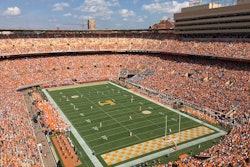These 11 steps will make your disgruntled customers happy again.
 Does it SAY 'Customer Service'?
Does it SAY 'Customer Service'?
In a very polite voice, I replied, "Mike, as a customer-service representative of your company, would you please check with someone who can authorize the correction?" I'll never forget his reply: Mike grabbed his nametag, pulled it away from his shirt and asked, "Does it SAY 'Customer Service' on my badge?"
Good customer service may not be as in-your-face, but fortunately there are many skills that can be learned. What follows are 11 that can help you help your customers when they've got a problem with you or your services:-
Move to a more private area.
If you have an angry patron in a long line of people waiting for admission or service, the worst thing you can do is leave the person to yell in front of an audience that could turn ugly on you. Whenever a customer is upset, ask him or her to step aside so that you can talk privately. If you believe the situation is unsafe or volatile, always remain calm and call for backup assistance.
-
Listen, and acknowledge that you are listening.
One way to cool off customers is to demonstrate that you're listening. The best way to do this is to repeat what they've said for confirmation. When you demonstrate that you've listened, the customer will be more apt to fully listen to what you have to say when it's your turn to speak. Consistent eye contact, nodding and repeating key words also reinforce that you're paying attention.
That means that when a coach from a softball league comes storming into your office to complain that the sprinklers came on in the middle of the game, you'll need to say (after you've listened to his entire story), "Last Wednesday at 6:45 p.m., Field #7, sprinkler trouble." Once the coach is assured that you got the correct information, tell him your plans for avoiding the situation in the future.
-
Don't interrupt.
No matter how difficult it is to hear the whole story, avoid the temptation to interrupt, even if you think you know where a complaint is heading. When you have a screaming mom who can't register for the session of swimming lessons around which she has planned her summer schedule, it's as important to listen to her entire story as it is to offer some kind of solution. Once she is finished, don't make excuses, however valid. She isn't interested in hearing about your staffing issues or how popular that particular time slot is. The focus should be on offering some kind of alternative that can help improve the situation. In this case, you might consider offering her private lessons that can be scheduled around her summer plans.
-
Use the two-second rule.
After the customer has finished telling his or her side of the story, count to two before you begin talking. This guarantees that the customer has time to finish and gives you a few seconds to prepare what you are going to say. If you are thinking of your response while the customer is speaking, you aren't listening carefully.
-
Remember the customer's name and use it frequently.
When you use your customers' names in conversation, it shows you to be caring and attentive. It's a small thing, but it's likely to give the customer comfort: Your attention to little details makes them feel that you're in control of the situation, and your personal attention lets them know you care about their needs.
-
Speak and act respectfully.
Body language, voice tone and other nuances can make the difference between whether or not customers see you as respectful. For instance, it's a natural tendency to sigh as you turn to walk away from an over-demanding customer. Chances are, the customer will hear or see you sighing -- and that is sure to just make him or her even angrier.
-
Choose your words carefully.
The right phrase can do a lot to defuse a tense situation. Instead of using words like "policy" and "can't," choose a more pleasing response. Don't say, "I'll try"; say, "I will." Instead of "our policy," go with "our guidelines." And avoid "I don't know." "Let me find out for you" has a better ring to it.
-
Represent your organization -- not yourself.
Always respond with "we" instead of "I." When you represent yourself as part of the bigger picture, you have stronger backing and more credibility than when you use "I" and appear to be acting on your own.
-
Apologize to the customer.
If a customer comes to you with a complaint and the error is a result of an oversight on your organization's part, don't hesitate to apologize. Conversely, don't feel obligated to do so if you have done nothing wrong and the organization is not at fault.
-
Better yet, move to a quick resolution.
It is more important to appease the customer than it is to fight about who was right and who was wrong. Minimal response time is imperative to a positive end result. Immediately let your customers know what you CAN do for them. If you need to get approval from someone else in your organization, let your customers know the specific steps you plan to take on their behalf. If it takes you longer than expected, provide an update and let them know you are still working on it.
-
Thank the customer.
It may feel odd to thank a customer for complaining, particularly if the exchange is unpleasant. However, your customer is doing you a favor by bringing the issue to your attention. It gives you the opportunity to address the problem before it affects other customers.
When I was a facility manager, I immediately called anyone who submitted a patron concern form. Even if I didn't have an answer for that person, I would thank him or her for bringing the issue to our attention. Then I would explain the steps we would take to resolve the problem.
Back to good ol' Mike -- remember him? The last thing I said to him -- it's not what you're thinking -- was that I'd like to speak with a manager who did know something about customer service. That person was obviously experienced in this area. He listened thoroughly to my dilemma, allowed me to show him the sign offering the rebate, and then quickly apologized by saying, "That sign has been up there for five weeks and you're the first person to notice the error. Thanks for bringing it to our attention. I will be happy to honor the posting. Can I ring you up?"
I left the store happy, though I did take a moment to tell the manager about my exchange with Mike. I had to. Mike might still be costing them customers if I hadn't.




































